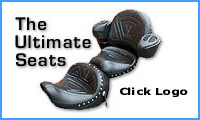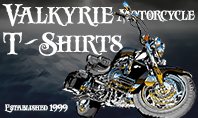The Hammond organ is an electric organ which was invented by Laurens Hammond in 1934 and manufactured by the Hammond Organ Company. While the Hammond organ was originally sold to churches as a lower-cost alternative to the wind-driven pipe organ, in the 1960s and 1970s, it became a standard keyboard instrument for jazz, blues, rock music and gospel music.
The original Hammond organ used additive synthesis of waveforms from harmonic series made by mechanical tonewheels which rotate in front of electromagnetic pickups. The component waveform ratios are mixed by sliding drawbars mounted above the two keyboards. Although many different models of Hammond organs were produced, the Hammond B-3 organ is the most well-known type. In the late 1960s and throughout the 1970s, the overdriven sound of B-3 (and in Europe, the C-3) organs were widely used in progressive rock bands and blues-rock groups. Although the last electromechanical Hammond organ came off the assembly line in the mid-1970s, thousands are still in daily use.
In the 1980s and 1990s, musicians began using electronic and digital devices to imitate the sound of the Hammond, because the vintage Hammond organ is heavy and hard to transport. By the 1990s and 2000s digital signal processing and sampling technologies allowed for better imitation of the original Hammond sound.
American engineer and inventor Laurens Hammond filed U.S. Patent 1,956,350 for a new type of "electrical musical instrument" that could recreate a pipe organ–type sound. The invention was unveiled to the public in April 1935 and the first model, the Model A, was made available in June of that year. The organ was first used for popular music by Milt Herth, who played it live on WIND (AM) soon after it was invented. The Hammond organ was widely used in United States military chapels and post theatres during the Second World War, and returning soldiers' familiarity with the instrument may have helped contribute to its popularity in the post-war period.
Hammond had intended his invention to be an affordable substitute for pipe organs, as a replacement for the piano in middle-class homes, and as an instrument for radio broadcasting. However, by the 1950s, jazz musicians such as Jimmy Smith began to use the organ's distinctive sound. By the 1960s, the Hammond became popular with pop groups and was used on the British pirate station Radio 390. In Britain the organ became associated with elevator music and ice rinks music. However, the overdriven sound of the Hammond gained a new image when it became part of 1960s and 1970s rock with artists like Gregg Allman, Steve Winwood, Keith Emerson, Jon Lord, and Rick Wakeman.
Hammond tonewheel organs are preferred among many vintage organ enthusiasts, the most popular models also having tube amplifiers. Some of the later Hammond models combine tonewheel generation with solid-state amplifiers, with the latest models of that era being fully solid state. Hammond is now owned by Suzuki Company. Hammond-Suzuki makes digital organs that replicate the tonewheel organ sound.
B-3 / C-3 / A-100 series
B-3/C-3 Production years: December 1954 – 1974
A-100 series Production years: April 1959 – December 1965 (continued after 1965 in the UK under licence from Hammond)
In the decades after their introduction, the B-3, C-3 and A-100 series were used heavily in the Gospel, jazz, and blues genres and as theatre organs, providing live music for feature films or at public stadiums and ice rinks. The difference between the B-3 and the C-3 is purely cosmetic. The B-3 sits on four turned wooden legs, so the organist's feet are visible from all sides of the organ. The C-3 is covered on the front and sides by "modesty" panels, which prevent the audience from seeing the organist's feet. This allows playing in a skirt while facing the audience. The A-100 series includes all the internal components and features of the B-3/C-3 plus built-in speakers and reverb (basically all the components of a PR40 tone cabinet inside).
The A-100 was marketed as a "home" console, since it had built-in speakers
The B-3 was marketed for musicians who wanted to use a separate tone cabinet (Hammond tone cabinet or Leslie speaker).
The C-3 was marketed for church use, because of its "modesty" or "privacy" panels, which hid the organist's—often a woman's—legs when the organ was positioned in front of the congregation.
In the 1950s and 1960s, the B-3 was used in jazz bands (Walter Wanderley) and in organ trios, such as Jimmy Smith's organ trio. In the late 1960s and throughout the 1970s, the B-3 and C-3 were widely used in rock bands ranging from Latin rock groups such as Santana (B-3) to progressive rock groups such as Procol Harum, Yes (C-3), Styx, Kansas, Keith Emerson, (of the band Emerson, Lake & Palmer (C-3, L-100), Boston, Pink Floyd (C-3), and Eloy to blues-rock groups such as The Allman Brothers Band (B-3), Deep Purple, Clutch, (C-3), the transcendent B-3 sound of "Gimme Some Lovin'" by Spencer Davis Group, and Elbernita Twinkie Clark of The Clark Sisters is dubbed as the "Queen of the Hammond B3".
In the 1980s and 1990s, the B-3 continued to be used by many churches and also bands from a range of styles, including gospel, rock, hard rock, jazz, blues, and "jam" bands. This organ was also a favorite of renowned Grateful Dead keyboard player Brent Mydland as well as Page McConnell of Phish, Danny Federici of The E Street Band, and Tom Scholz of Boston. In the 1980s and 1990s, lightweight "clone" organs that imitated the sound were increasingly used to digitally recreate the B3's sound as a more portable (and less back-breaking) substitute, especially in live touring settings. Nevertheless, in the 2000s, some organ trios such as the Ken Clark organ trio still perform with vintage B-3 organs.
New B-3
In 2002, the Hammond company (now known as Hammond-Suzuki) relaunched the B-3 as the 'New B-3', a re-creation of the original electromechanical instrument using modern-day electronics and a modern sound generator system. The New B-3 is constructed to appear like the original B-3, and the designers attempted to retain the subtle nuances of the familiar B-3 sound. Hammond-Suzuki promotional material claims that it would be difficult for even an experienced B-3 player to distinguish between the old and new B-3 organs. A review of the New B-3 by Hugh Robjohns called it "a true replica of an original B-3 ... in terms of the look and layout, and the actual sound."
The New B-3 was used by well-known B-3 players such as Jimmy Smith and Joey DeFrancesco, who both played a New B-3 on the collaborative album 'Legacy' released in 2005 shortly before Smith's death. Neal Evans of Soulive also plays a Hammond B-3, using it to produce both the organ and bass lines for the group's soul based music. Additionally, Evanescence used the new B-3 organ in almost every song of their album The Open Door, released in October 2006. Hammond-Suzuki went on to release a portable version of the New B-3, the XK3 as well as a new version of the C-3 model.
The sound of the Hammond organ can be heard in rhythm and blues pieces such as "Hello Stranger" (March 1963) written by Barbara Lewis with backup by The Dells. The Hammond B-3 organ can be heard in 1960s surf music, where the spinning Leslie speaker created distinctive special effects. The Hammond sound was a key part of the mystical soundscape of the 1967 Procol Harum song, "A Whiter Shade of Pale" , in the Bach-like introductory measures played by organist Matthew Fisher (who actually played an M-102). Except for a few months in late 1976 and early 1977, Procol Harum has always (and still does after 40 years) appeared in concert with a Hammond. It was also popularized in Steve Winwood's soaring, animal-like "Gimme Some Lovin'" with Spencer Davis Group, in The Small Faces' mod anthems All or Nothing and Itchycoo Park by Ian McLagan, and in the instrumental song "Green Onions" by Booker T. Jones of Booker T. and the MGs. Billy Preston also played the Hammond organ in songs including "Outa-Space", which was one of the first songs that launched him into his solo career. The Hammond organ has also, though rare, been used in Heavy Metal, one notable example is on the 2001 album Imaginary Sonicscape by the Japanese Avant-garde Black Metal band Sigh.
Hammond organs are also widely used in 1970s progressive rock music bands such as Pink Floyd's Rick Wright (First on a Hammond L-101, and later on a B-3); Emerson, Lake and Palmer's Keith Emerson (L-100 and C-3); Genesis's Tony Banks (a Hammond L-122 and later a Hammond T-102); and Yes' Rick Wakeman (C-3). It also sparked the interest of the keyboard players in early heavy metal music bands such as Deep Purple's Jon Lord (C-3), Uriah Heep's Ken Hensley, and Led Zeppelin's John Paul Jones. In the 1990s, Rob Collins of The Charlatans integrated the Hammond organ back into British rock 'n' roll. The song Weirdo (1992, #19 UK charts) opened with a solo Hammond riff that returned at each chorus. American progressive rock band Kansas used them extensively, notably on their song Carry on Wayward Son.
So, who don't love the sound of a Hammond B-3 Organ?? It was one of the best things that ever happened to rock and roll! Instead of a band tonight I have featured the Hammond B-3 Organ, which is featured in all the songs this evening.............
P.S. If the horn section is standing behind the B-3 and two Leslie Rotary Cabinets on stage in Nashville, TN ( like I was ) it could mean a certain ammount of hearing loss!!

Four Hammond B3's playing The Cat
Procol Harum - A Whiter Shade Of Pale
Spencer Davis Group - Gimme Some Lovin
Billy Preston Outta Space
Small Faces - Itchycoo Park
Booker T & the MG's - green onions
Hoedown - Emerson, Lake & Palmer
Uriah Heep - July Morning
Rick Wakeman performs Catherine Parr
kansas Point of know return





